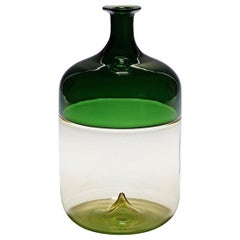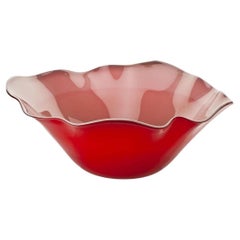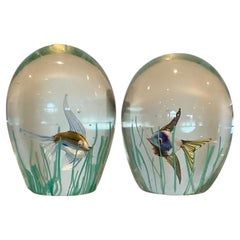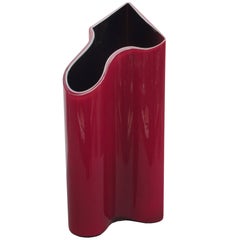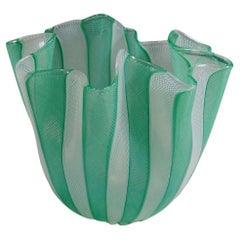Serveware, Ceramics, Silver and Glass
Mid-20th Century Italian Mid-Century Modern Serveware, Ceramics, Silver and Glass
Art Glass, Murano Glass
20th Century Serveware, Ceramics, Silver and Glass
Glass
1950s Italian Mid-Century Modern Vintage Serveware, Ceramics, Silver and Glass
Art Glass
1980s Italian Mid-Century Modern Vintage Serveware, Ceramics, Silver and Glass
Art Glass, Blown Glass, Cut Glass
1990s Italian Modern Serveware, Ceramics, Silver and Glass
Art Glass
Mid-20th Century Italian Mid-Century Modern Serveware, Ceramics, Silver and Glass
Art Glass, Murano Glass
1940s Other Vintage Serveware, Ceramics, Silver and Glass
Murano Glass
1950s Italian Mid-Century Modern Vintage Serveware, Ceramics, Silver and Glass
Art Glass
1960s Italian Mid-Century Modern Vintage Serveware, Ceramics, Silver and Glass
Gold Leaf
Mid-20th Century Italian Mid-Century Modern Serveware, Ceramics, Silver and Glass
Art Glass, Murano Glass
1950s Italian Mid-Century Modern Vintage Serveware, Ceramics, Silver and Glass
Glass, Murano Glass
1970s Vintage Serveware, Ceramics, Silver and Glass
Glass
1950s Italian Mid-Century Modern Vintage Serveware, Ceramics, Silver and Glass
Blown Glass
Mid-20th Century Italian Mid-Century Modern Serveware, Ceramics, Silver and Glass
Art Glass, Murano Glass
1970s Italian Mid-Century Modern Vintage Serveware, Ceramics, Silver and Glass
Art Glass, Murano Glass
Mid-20th Century Italian Mid-Century Modern Serveware, Ceramics, Silver and Glass
Art Glass, Murano Glass
1940s Italian Vintage Serveware, Ceramics, Silver and Glass
Brass
1950s Italian Mid-Century Modern Vintage Serveware, Ceramics, Silver and Glass
Blown Glass, Murano Glass, Opaline Glass
Mid-20th Century Italian Mid-Century Modern Serveware, Ceramics, Silver and Glass
Art Glass, Murano Glass
Late 20th Century Italian Mid-Century Modern Serveware, Ceramics, Silver and Glass
Art Glass, Murano Glass
Mid-20th Century Italian Mid-Century Modern Serveware, Ceramics, Silver and Glass
Art Glass
Mid-20th Century Italian Serveware, Ceramics, Silver and Glass
Art Glass
20th Century Italian Mid-Century Modern Serveware, Ceramics, Silver and Glass
Murano Glass
1960s Italian Mid-Century Modern Vintage Serveware, Ceramics, Silver and Glass
Art Glass
Mid-20th Century Italian Mid-Century Modern Serveware, Ceramics, Silver and Glass
Art Glass, Murano Glass
1950s Italian Mid-Century Modern Vintage Serveware, Ceramics, Silver and Glass
Art Glass
Late 20th Century Italian Mid-Century Modern Serveware, Ceramics, Silver and Glass
Murano Glass
1980s Italian Post-Modern Vintage Serveware, Ceramics, Silver and Glass
Glass
Late 20th Century Italian Mid-Century Modern Serveware, Ceramics, Silver and Glass
Murano Glass
1950s Italian Mid-Century Modern Vintage Serveware, Ceramics, Silver and Glass
Art Glass, Blown Glass
Late 20th Century Italian Mid-Century Modern Serveware, Ceramics, Silver and Glass
Art Glass, Murano Glass
Mid-20th Century Serveware, Ceramics, Silver and Glass
Art Glass
Early 20th Century Italian Mid-Century Modern Serveware, Ceramics, Silver and Glass
Art Glass, Murano Glass
1990s Italian Mid-Century Modern Serveware, Ceramics, Silver and Glass
Art Glass
Late 20th Century Italian Mid-Century Modern Serveware, Ceramics, Silver and Glass
Murano Glass
Early 20th Century Italian Mid-Century Modern Serveware, Ceramics, Silver and Glass
Art Glass, Murano Glass
1950s Italian Mid-Century Modern Vintage Serveware, Ceramics, Silver and Glass
Glass, Murano Glass
1930s Italian Mid-Century Modern Vintage Serveware, Ceramics, Silver and Glass
Art Glass, Murano Glass
1970s Italian Mid-Century Modern Vintage Serveware, Ceramics, Silver and Glass
Murano Glass
1960s Italian Modern Vintage Serveware, Ceramics, Silver and Glass
Glass
Mid-20th Century Italian Modern Serveware, Ceramics, Silver and Glass
Murano Glass
1930s Italian Vintage Serveware, Ceramics, Silver and Glass
Glass
Mid-20th Century Italian Mid-Century Modern Serveware, Ceramics, Silver and Glass
Art Glass, Murano Glass
1970s Italian Mid-Century Modern Vintage Serveware, Ceramics, Silver and Glass
Murano Glass
1950s Italian Mid-Century Modern Vintage Serveware, Ceramics, Silver and Glass
Murano Glass
21st Century and Contemporary Italian Modern Serveware, Ceramics, Silver and Glass
Glass
1950s Italian Mid-Century Modern Vintage Serveware, Ceramics, Silver and Glass
Art Glass
21st Century and Contemporary Italian Modern Serveware, Ceramics, Silver and Glass
Glass
1980s Italian Mid-Century Modern Vintage Serveware, Ceramics, Silver and Glass
Glass
1970s Italian Modern Vintage Serveware, Ceramics, Silver and Glass
Art Glass
1990s Italian Mid-Century Modern Serveware, Ceramics, Silver and Glass
Murano Glass
Mid-20th Century Italian Mid-Century Modern Serveware, Ceramics, Silver and Glass
Art Glass
Mid-20th Century Italian Mid-Century Modern Serveware, Ceramics, Silver and Glass
Art Glass
1990s Italian Modern Serveware, Ceramics, Silver and Glass
Blown Glass
Late 20th Century Italian Mid-Century Modern Serveware, Ceramics, Silver and Glass
Murano Glass
1960s Italian Space Age Vintage Serveware, Ceramics, Silver and Glass
Murano Glass
1970s Italian Vintage Serveware, Ceramics, Silver and Glass
Murano Glass
Antique and Vintage Serveware, Ceramics, Silver and Glass
Your dining room table is a place where stories are shared and personalities shine — why not treat yourself and your guests to the finest antique and vintage glass, silver, ceramics and serveware for your meals?
Just like the people who sit around your table, your serveware has its own stories and will help you create new memories with your friends and loved ones. From ceramic pottery to glass vases, set your table with serving pieces that add even more personality, color and texture to your dining experience.
Invite serveware from around the world to join your table settings. For special occasions, dress up your plates with a striking Imari charger from 19th-century Japan or incorporate Richard Ginori’s Italian porcelain plates into your dining experience. Celebrate the English ritual of afternoon tea with a Japanese tea set and an antique Victorian kettle. No matter how big or small your dining area is, there is room for the stories of many cultures and varied histories, and there are plenty of ways to add pizzazz to your meals.
Add different textures and colors to your table with dinner plates and pitchers of ceramic and silver or a porcelain lidded tureen, a serving dish with side handles that is often used for soups. Although porcelain and ceramic are both made in a kiln, porcelain is made with more refined clay and is more durable than ceramic because it is denser. The latter is ideal for statement pieces — your tall mid-century modern ceramic vase is a guaranteed conversation starter. And while your earthenware or stoneware is maybe better suited to everyday lunches as opposed to the fine bone china you’ve reserved for a holiday meal, handcrafted studio pottery coffee mugs can still be a rich expression of your personal style.
“My motto is ‘Have fun with it,’” says author and celebrated hostess Stephanie Booth Shafran. “It’s yin and yang, high and low, Crate & Barrel with Christofle silver. I like to mix it up — sometimes in the dining room, sometimes on the kitchen banquette, sometimes in the loggia. It transports your guests and makes them feel more comfortable and relaxed.”
Introduce elegance at supper with silver, such as a platter from celebrated Massachusetts silversmith manufacturer Reed and Barton or a regal copper-finish flatware set designed by International Silver Company, another New England company that was incorporated in Meriden, Connecticut, in 1898. By then, Meriden had already earned the nickname “Silver City” for its position as a major hub of silver manufacturing.
At the bar, try a vintage wine cooler to keep bottles cool before serving or an Art Deco decanter and whiskey set for after-dinner drinks — there are many possibilities and no wrong answers for tableware, barware and serveware. Explore an expansive collection of antique and vintage glass, ceramics, silver and serveware today on 1stDibs.
